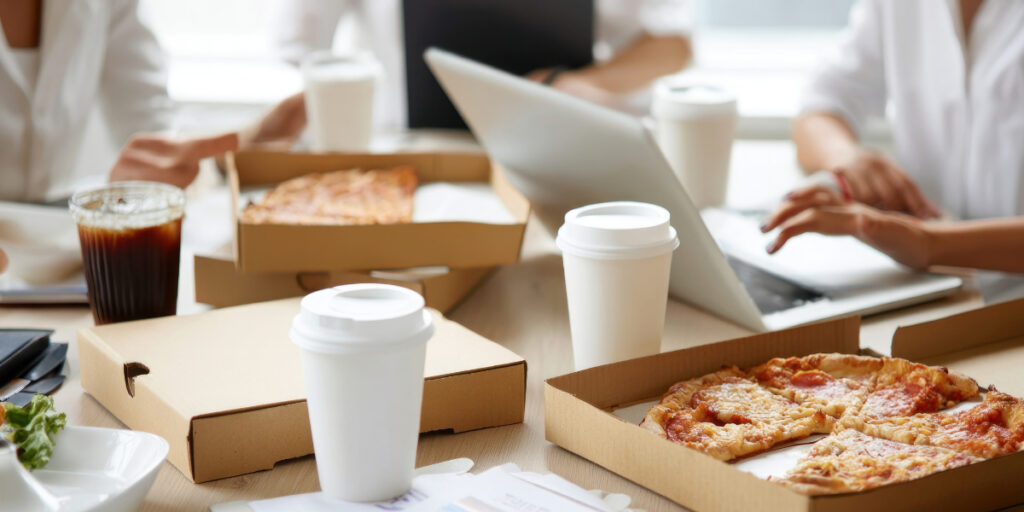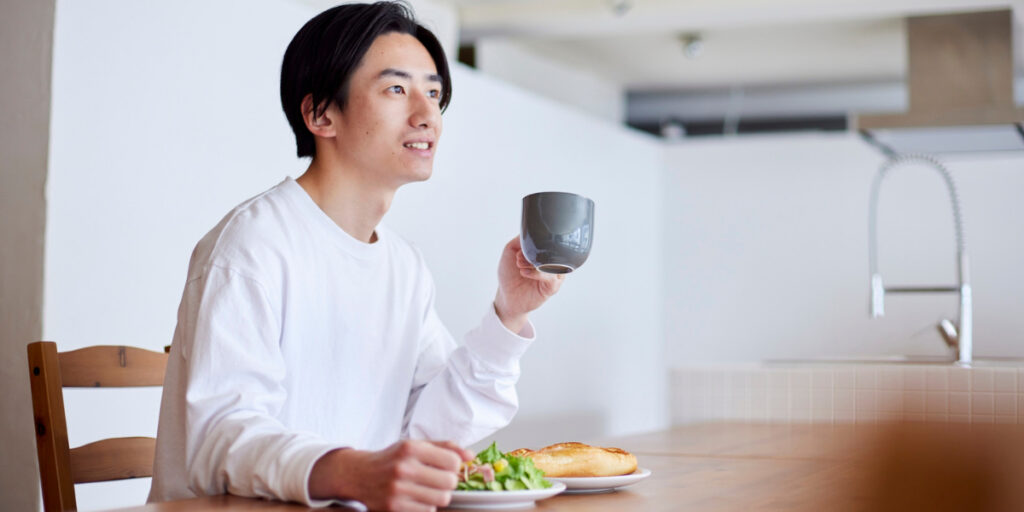
Everyone has experienced it—walking into a packed breakroom, juggling your lunch, and glancing for an open seat. Navigating shared spaces with grace means learning some lunchroom etiquette, so everyone feels comfortable and respected.
Lunch areas are more than places to eat; they’re micro-communities where small acts matter. People notice the way you use shared resources, handle your leftovers, and respect the time and space of others.
Diving into the details can offer new perspectives and strategies. Let’s explore practical habits, subtle cues, and real examples to help create an environment where everyone can enjoy lunchtime.
Claiming a Spot: The Art of Seating Without Overstepping
Finding and taking a seat in the work lunchroom should feel easy, but social norms come into play with each movement. Spot selection or joining a table impacts the mood for everyone present.
When you walk in and see a group talking quietly, make eye contact, smile, and ask: ‘Mind if I join you?’ This short phrase is enough to respect others’ boundaries and keep the energy positive.
Noticing Physical Cues When Scanning for a Seat
Shuffling chairs, turning backs, or spreading out bags usually signal a preference for privacy. If you sense hesitation, choose an open table even if it’s a bit farther from the kitchenette.
Compare this to waiting for a seat on public transit—sometimes people create subtle barriers. Instead of awkward intrusion, a quick glance and polite ask, like, ‘Is this seat taken?’ avoids discomfort for all.
Always select a spot that’s accessible but not in the path of frequent foot traffic. This shows consideration for coworkers moving in and out with their trays or leftovers.
Joining a Table: What to Say and How to Sit
When tables are partially full, begin with a friendly greeting: ‘Hi, there – mind if I join you for lunch?’ Wait for a smile or affirmative nod before sitting down.
Choose a seat with ample distance from personal space bubbles—aim for at least one empty chair if possible. Sit down smoothly and set your lunch quietly, avoiding items spilling over shared surfaces.
If the conversation is private, occupy yourself with your phone or reading material. If invited, join the discussion naturally without dominating table talk.
| Situation | What To Notice | Recommended Action | Outcome |
|---|---|---|---|
| Mostly empty room | Plenty of seating, no clusters | Pick any open spot, avoid corners | Low risk of intruding |
| Group in conversation | Leaned-in posture, low voices | Politely ask, respect refusal | Shows respect for privacy |
| Sparse solo diners | Scattered, heads down | Choose a separate table | Allows space for solitude |
| Table nearly full | Body language open, laughter | Ask to join, read the tone | Can foster camaraderie |
| No open tables | Multiple bags and items, crowding | Request to pull up a chair | Ensures no one is left out |
Respecting Shared Appliances: Clean, Prompt, and Communicative
Shared appliances—microwaves, fridges, coffee makers—keep lunchrooms running, but only when everyone uses them mindfully. Small acts, like wiping up spillovers, maintain these essentials for the next person.
Finish microwaving promptly, then immediately clear your meal so others aren’t kept waiting. If you leave items in the fridge for too long, label them clearly or throw them out by week’s end to avoid messes.
Creating a Kitchen Checklist
Maintaining hygiene in shared spaces requires steady attention. A checklist approach—like checking the counter for spills or ensuring the fridge door is closed—reminds everyone to leave things better than they found them.
- Wipe down surfaces after use to remove crumbs and spills, making the lunchroom inviting for the next coworker.
- Remove forgotten food from the communal fridge by Friday to prevent odors and unnecessary trash, supporting a cleaner environment.
- Respect time limits on appliances by stepping away briefly and returning right as your timer ends so others aren’t left waiting in line.
- Use only your own labeled containers to avoid confusion, which maintains food safety and minimizes misplaced items in the fridge.
- Report broken machines—like a microwave not turning on—to office management immediately, so everyone stays informed and repairs happen swiftly.
Each checklist step supports effortless flow and collective comfort. Contributing in small ways shows everyone values shared resources and time.
Communicating When Issues Arise
If you notice the microwave isn’t working after your turn, tell the next person: ‘It seems stuck—maybe try another machine.’ A simple statement prevents surprise and delays for others.
- Let colleagues know if you’re heating pungent foods, such as saying: ‘Heads up, my curry has a strong aroma. Sorry if it travels!’ This helps everyone plan their space curves.
- Ask, ‘Is anyone waiting to use the toaster?’ if others are near, signaling consideration for the shared appliance and their schedules.
- Set up a polite rotation for busy times, with phrases like: ‘I can heat mine after you,’ smoothing out lunch rush bottlenecks automatically.
- Leave quick note if you accidentally create a mess but must step out: ‘Cleaned up most, will finish after call.’ It shows honesty and lets others know you intend to return.
- Praise visible acts of courtesy – ‘Thanks for restocking the paper towels!’ Recognition reinforces good habits and helps lunchroom etiquette become second nature.
Communicative habits keep frustrations from piling up, building trust and smoother workflows in shared spaces where small issues can turn big without attention.
Food Aromas and Noise: Small Adjustments for a Tranquil Space
Controlling food odors and lunchtime noise leads to a more pleasant atmosphere for all. You can’t remove all smells, but careful choices and simple adjustments show serious awareness of lunchroom etiquette.
Opt for compact, lower-odor meals if your office is sensitive. Heat fish or eggs discreetly, remembering to ventilate by opening a window or fanning air. Keeping lunchtime noise down—like silencing your phone—lets everyone recharge quietly.
Managing Aroma Sensitivities During Lunch
Keep pungent sauces, garlic, or leftovers in tightly sealed containers to contain their scent. If you notice others wincing or turning away, offer an honest apology with, ‘Sorry, I’ll remember next time.’ These moments can actually strengthen rapport.
After microwaving strong-smelling food, open the window briefly or use a desk fan to help air out the space. Others will appreciate this visible courtesy.
When bringing lunch from restaurants, discard wrappers and containers promptly—removing trash before leaving prevents lingering odors and keeps the room fresh for the next meal shift.
Volume Control: Navigating Conversation Levels
Laughter and chatting build camaraderie, but check the room first. If people are reading or resting, lower your voice. A simple hand gesture for quiet tells your group it’s time to dial back.
Mute any phones, alarms, or music players during lunchtime. If a colleague forgets, gently ask, ‘Would you mind turning that down? It’s lunchtime for others, too.’
Wait to take work calls outside the lunchroom, especially if conversations might drag on. If it must be urgent, step out and keep your voice low as you transition.
Handling Leftovers, Dishes, and Trash: A Responsibility Shift Everyone Shares
Accountability for your food waste, containers, and dishes is non-negotiable in lunchrooms. Leave spaces as you found them, or better. This mindset promotes mutual respect and avoids domino effects of clutter.
Wash dishes right after eating. If that’s not possible, at least rinse and stack neatly, signaling to others you intend to finish up soon.
Managing Food Storage and Forgotten Leftovers
Label everything that will stay in the fridge longer than a single lunch. This narrows confusion during group fridge cleanouts and reduces ‘random science experiment’ syndrome.
Every Friday, check for your forgotten containers, post a friendly group reminder, and clear out anything you can’t finish. Consistent routines limit food spoilage and waste.
If someone’s neglected lunch is leaking or molding, slip them a discreet heads-up or ask HR to send a collective reminder. Avoid direct blame when possible, focusing on solutions instead.
Tidy as You Go: Plates, Utensils, and Trash
Carry personal dishes back to your desk for washing when lunch slots are full. This visibly frees space and keeps tables less cluttered for the next wave of diners.
Sweep up crumbs, wipe sticky spots, and double check the tables. Trash that doesn’t fit in the bin should be compacted or replaced by whoever finishes their meal last in the room.
Keep shared sponges, soap bottles, and towels stored neatly. Replace them when running low—such basics go a long way for daily lunchroom etiquette, making cleanup a shared, ongoing responsibility.
Respecting Personal Conversations and Lunch Breaks: Social Boundaries Matter

Protecting coworkers’ private moments at lunch lets everyone recharge. Gauge body language—earbuds, books, or closed laptops signal a desire for solo time, so avoid pulling up a chair or starting lengthy small talk.
If a group is huddled over a funny video or swapping weekend stories, ask with a smile if it’s okay to join. If declined, continue enjoying your lunch without taking offense.
Signs Someone Wants Quiet or Connection
Headphones in, minimal eye contact, or rapid eating show a need for downtime. Nod or smile, but steer clear of starting conversation.
If you find yourself with extra lunch or treats, say, ‘I brought extras—anyone want some?’ This offers a connection without pressuring anyone into conversation or company they didn’t seek.
When colleagues are gathered at a table, and space is tight, always ask before sitting. The habit says: ‘Your time and comfort matter as much as mine.’
Taking Calls or Handling Sensitive Conversations
If you get an important phone call, quietly step outside—even just into the hallway—so others aren’t disturbed by work talk or private matters.
Sensitive chats, even if whispered, disrupt the peace for those who need a mental break from office buzz. Schedule private calls elsewhere when possible.
If overhearing confidential details, avoid sharing or reacting later—maintaining discretion is another layer of lunchroom etiquette worth upholding.
Adapting Lunchroom Etiquette to Remote and Hybrid Workplaces
Lunchrooms have changed, with some offices rotating attendance or providing smaller spaces. Adapting etiquette—like limiting group sizes or organizing scheduled lunch breaks—meets evolving needs while preserving courtesy.
Shared virtual lunches also benefit from etiquette: mute microphones when chewing, keep backgrounds neutral, and be prompt for scheduled remote meals, respecting everyone’s time.
Virtual Lunchroom Courtesy
In online gatherings, hold off on eating during presentations or team updates, focusing on conversation. If you’re uncertain about a food’s aroma or a noisy wrapper, wait until a group chat has shifted back to informal mode.
Take turns sharing screen space or conversation topics. If someone leads a virtual lunch game or icebreaker, participate actively—showing presence is the new form of etiquette respect online.
If attending from a public space, use headphones and keep background noise minimal to avoid disrupting the group. These actions matter just as much as lunchroom etiquette in physical offices.
Hybrid Space Adjustments
With smaller groups split by remote and in-office days, clear fridge labeling and shorter appliance queues become crucial. Share calendar updates: ‘I’m in-office Tuesday, clearing my lunch then,’ helps coordinate.
If you borrow an item from the office fridge for a special meeting day, let others know by posting: ‘Borrowed creamer, will replace Thursday.’ Transparency matters as spaces flex and routines change.
Momentum for group lunch traditions may fade, so revive them with low-key invites: ‘Anyone in this week for Taco Tuesday?’ Regular cadence keeps lunchroom spirit alive regardless of hybrid complexity.
Practicing Lunchroom Etiquette: Creating Comfort and Community
Understanding and practicing lunchroom etiquette creates a comfortable, respectful, and enjoyable workplace for everyone. Each small habit, from wiping up to asking before joining a table, builds a collective culture of kindness.
Every shared workspace thrives on both visible and invisible acts of thoughtfulness. Remembering to observe body language, use gentle words, and tend to messes goes beyond rules—it shapes a pleasant daily experience.
Ongoing attention to these small behaviors ensures that lunch never becomes a source of stress. Next time you walk into the lunchroom, try one new courtesy—your coworkers will notice, and the habit may spread.
Frequently Asked Questions
What if all seats are taken and coworkers seem busy?
Wait a minute at the entrance and make eye contact with someone seated. Ask, ‘May I join?’ If no clear invitation is given, consider eating at your desk or returning later. Respect space, especially during busy times.
How do you handle strong food odors in a small lunchroom?
Keep pungent foods tightly sealed and open windows or fans briefly after microwaving. Announce strong dishes ahead of time if possible. Quick clean-up and odor-neutralizers in the kitchen also contribute to a more pleasant lunch experience.
Is it okay to have work meetings in the lunchroom?
Reserve the lunchroom for meals and socializing when possible. Hold meetings elsewhere to allow others privacy and downtime. If you must discuss work, keep your voices low and avoid monopolizing the space for long periods.
How should leftovers in the fridge be managed?
Label containers clearly with your name and date. Check leftovers regularly and discard by Friday. Remind coworkers if something’s been there too long; discreet group reminders work best to avoid confronting individuals directly.
Can you invite new colleagues to lunch tables?
Absolutely! Approach with a genuine offer: ‘Would you like to sit with us?’ This opens up company culture and makes everyone feel welcome. Respect their answer and make space for future invitations if declined the first time.

Business Lunch Etiquette: Professional Rules
Discover actionable etiquette strategies, expert advice, and real-world examples to help you build trust and confidence at the dining table.

